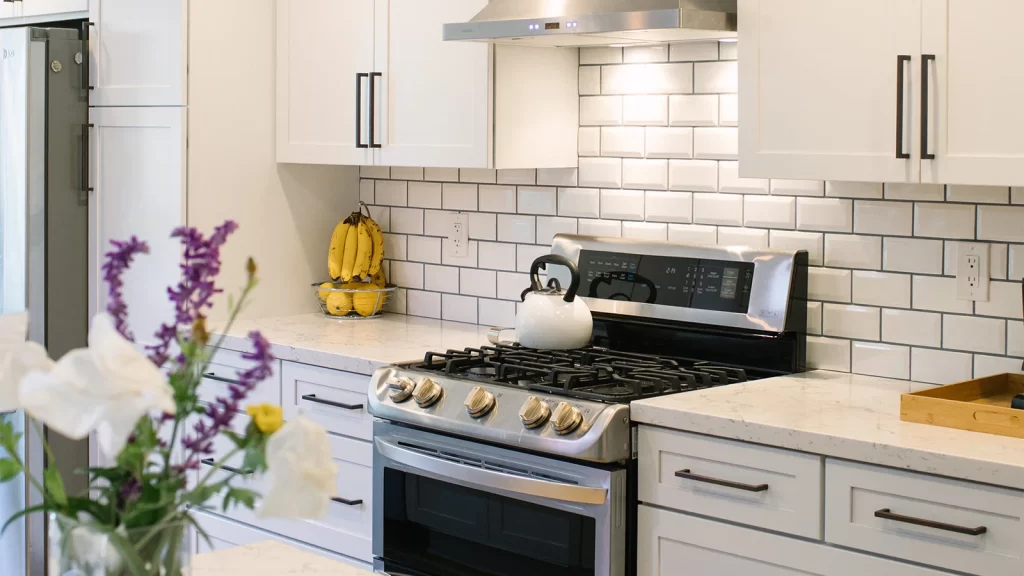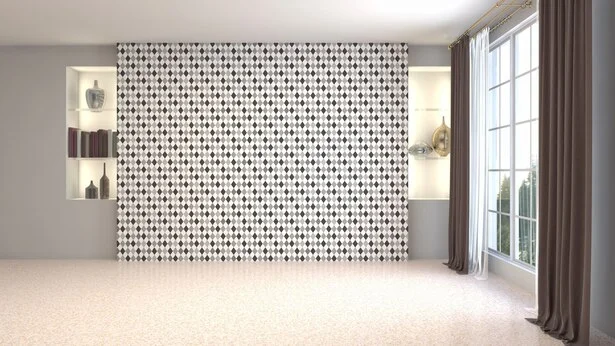Subway tiles are safe bets. They are those old-fashioned ceramic tiles that have been adorning subways and kitchen backsplashes for more than one hundred years now. Subway tiles are called the little black dress in interior decorating thanks to their versatile and timeless design. They are matchless and never get old-fashioned.
It can also be necessary to make your kitchen or bathroom more impressive. Is it easy and cheap? Do you have a few days for an update to spruce up your space that will last? Subway tiles pass all these criteria. The combination of simple, but at the same time very stylish drawings will look good in any room, irrespective of the interior design either glossy or romantic.
For such a long time, subway tiles have remained a standard because of their quality. These are highly durable, with a simple, easy-care design that makes them suitable for high-traffic areas of the house. Besides, subway tiles are cheap, do not require much maintenance, and even a freshman home renovator or an experienced remodeler can install them.
The History and Origins of Subway Tiles
-
There are hardly any fail-proof choices than sub way tiles For instance, some of those classic ceramic tiles that had been lining subway stations and Subway tiles are still popular today for kitchen and bathroom walls since the early 1900s. These rectangular tiles were originally made from ceramic and hence named after the New York subway station.
-
Tiles were considered because of their strength and ability to resist stains as well as their cheapness. With the growth of the subway system, there was an increased prevalence of subway tiles in homes and businesses.
-
White is regarded as the best color for this type. However, subway tiles are offered in different colors. The white and light gray are popular due to their simple looks. It is the original white grout and it’s still in vogue.
-
Small places can also work well with subway tiles. They have a uniform shape and a smooth surface which makes the wall look more roomy. These reflective tiles help to scatter the light and make the areas of the room illuminated by a few natural lights brighter.
-
Most homeowners today have moved past plain white subway tiles and are opting for bolder variants of these tiles featuring dark, contrasting grout or are using them in interesting ways. The revival in the popularity of the subway tile could be a consequence of the present interior designs that have been influenced by the industrial style.
-
Subway tiles can be incorporated into modern trends but always will stay iconic and universal design decisions, suitable for any refurbishment or renovation projects. They have a timeless design combined with their practicality to make sure they survive the passage of time
The Versatility and Eternal Beauty of Shubay Tile
This is why subway tiles are timeless classics. They are simple yet stylish, and they go well with just about any decor because of their versatility as they can be utilized for different things.
Subway tiles have an old-school origin, dating back to 1900 when they were used in subway stations. Their longer shape and shiny finish made them suitable for busy areas. In today's world, people often use subway tiles in kitchen backsplashes, bathroom walls, and fireplace surrounds.
Explore Subway Tile Collection
Subway tiles are painted in neutral muted shades that match most color schemes. The range of colors includes from bright white to earthy beige tones, therefore subway tiles offer a neutral but glamorous setting. They work great for contemporary, traditional, rustic, and industrial styles.
The subway tiles are extremely tough and waterproof, suitable for use in high-humidity places such as the kitchen and bathroom. Surfaces like these stay dry and resist staining, preventing the growth of molds

Subway tile layout is available in varied patterns and designs, for a unique outcome. Use offset tiles, design a herringbone layout, or employ decorative tiles depending on your taste. Natural stone, marble, as well as glass mosaics pair up with subway tiles.
It’s hard to beat the adaptability of subways, their longevity, and their enduring charm. When it comes to a cost-effective, no-fuss surface that offers style and practicality, nothing beats Subway tiles. convert to human written Utilize this popular design feature in your house.
Subway Tiles For Your Home Design
The subway tile is a timeless piece of ornamentation, which could go along easily with any interior design. Their typical look and flexibility make them go well together with contemporary as well as antique interior designs. Here are some ways to incorporate subway tiles into your space:
Backsplashes
The backsplash is mostly done using subway tiles in bathrooms and kitchens These are strong and water resistant therefore suitable for the high traffic wet conditions. A subway tile backdrop will do some style work and save your wall from spatters and drips. Alternatively, you can consider laying the tiles in a herringbone or basketweave pattern for an additional dash of visual interest.
Accent Walls
For a beautiful statement piece in your room, cover one of the walls with floor-to-ceiling subway tiles. Hang a tile wall and anchor it with furniture pieces such as a bed, a sofa, or a buffet table. These reflective tiles make the space feel roomier and brighter. Subway tiles make a great choice for entryways, living rooms, bedrooms, and dining rooms as an accent wall.

Fireplace Surrounds
Subway tiles are a nice, inexpensive option for the surround of a wood-burning fireplace. These also protect the wall from heat damage and may even prolong the life of your paint or wallpaper. Combine simple and affordable white subway tiles with a rustic wood mantel for a cozy cottage feel. Toilet tiles in the more modern room should be the charcoal gray color and the simple “floating” mantle.
Flooring
Subway tiles are also ideal for flooring in small areas such as mudrooms, laundry rooms, and bathrooms. This is so because they possess a firm tough surface that is very resilient against pedestrian pressure and moisture. Subway tile flooring might feel slippery underfoot when wet and therefore, the incorporation of non-slippery mats, strips, or sealed surfaces would be useful to ensure that the flooring remains safe. subsection-theory subsection-theory Traditional wall ceramics generally feature less grippy and textured surfaces.
Adopting subway tiles for different parts of the house promotes uniformity as one steps from room to room. Subway tiles will remain in style and are easy to use for any renovation or remodeling process.
Conclusion
The little things count in designing your home. Although subway tile might seem like an uncomplicated option, it is a timelessly fashionable option. The look has been around for about 100 years. It never goes out of style, as it is very adaptable. It works great with all colors which makes it ideal for kitchen remodeling or when renovating the bathroom area of your home. You have so much choice of colors and patterns to pick from, therefore, you will end up with a unique feel to accompany your taste. Not surprisingly, their minimal maintenance translates into maximized results. For a space with a timeless style, subway tile is always the right choice. You really can't go wrong.







 Live Photos & Videos
Live Photos & Videos